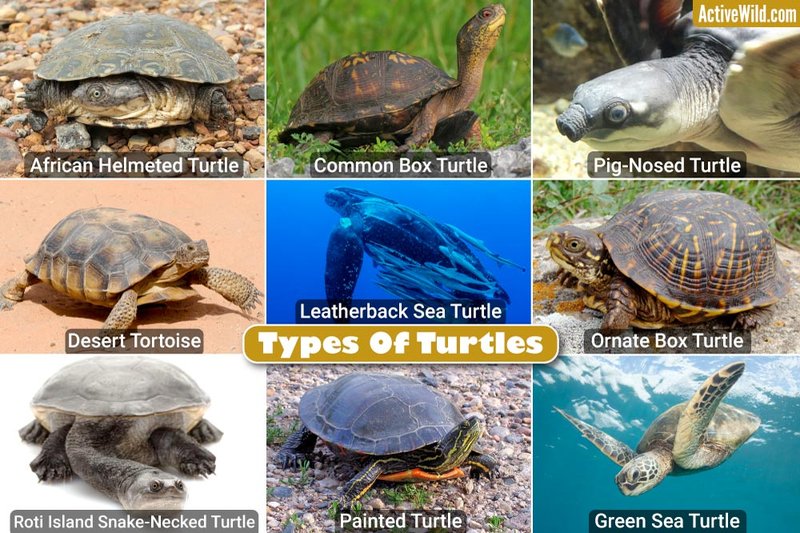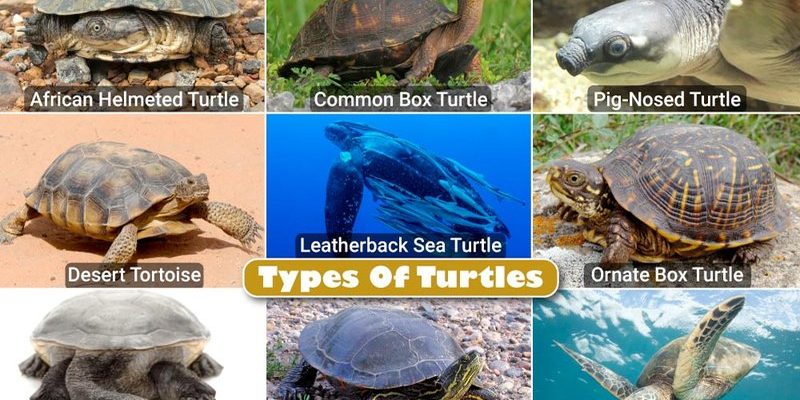
Let me explain how to break down the process of turtle identification. Just like getting to know a friend, it’s all about the little details. From their shell shape and color to their habitat preferences, each turtle has its own story to tell. So grab your curiosity hat, and let’s dive into the fascinating world of turtles!
Understanding Turtle Types
Turtles belong to a group of reptiles called Testudines, which includes both freshwater and marine species. Here’s the thing: not all turtles are created equal! When you’re trying to identify a turtle, it’s important to know that they come in various shapes, sizes, and colors. Broadly speaking, you’ll find three main types of turtles:
- Freshwater Turtles: These are the turtles you’re most likely to see in ponds, rivers, and lakes. They often have flatter shells and longer limbs compared to their relatives.
- Sea Turtles: Found in oceans, these turtles have streamlined bodies and flipper-like limbs for swimming long distances.
- Tortoises: Unlike other turtles, tortoises are primarily land-dwellers. They have dome-shaped shells and are usually quite heavy.
Understanding these categories helps you narrow down your options. If you spot a turtle near a body of water, it’s most probably a freshwater turtle. But if you find one sunning itself on a beach, you may have stumbled upon a sea turtle!
Identifying Freshwater Turtles
When you’re out exploring streams or ponds, look for the telltale signs of freshwater turtles. Common species in North America include the Painted Turtle, Red-eared Slider, and Snapper. Each comes with its distinct features:
– Painted Turtles tend to have bright markings and a smooth, oval shell. They enjoy basking in the sun on logs or rocks.
– Red-eared Sliders typically have a green shell with red markings near their ears. They’re very social and often seen swimming together.
– Snapping Turtles are larger and have a rough, rugged shell. They can be a bit more elusive, preferring to stay underwater until they feel safe.
When you spot one, take a moment to observe its environment. Freshwater turtles often prefer shallow, warm waters with plenty of vegetation. You might be wondering how a turtle hides—sometimes, they’ll bury themselves in mud or sand!
Spotting Sea Turtles
Identifying sea turtles takes a bit more patience and a keen eye. These magnificent creatures spend most of their time in the ocean, returning to shore mainly to lay eggs. The most commonly observed species include the Loggerhead, Green, and Hawksbill turtles.
– Loggerhead Turtles have large heads and a reddish-brown shell. They’re known to migrate long distances, which can make sightings rare.
– Green Turtles are named for their body fat, which has a greenish hue. They have a smooth, rounded shell and are often found in coral reefs.
– Hawksbill Turtles are easily recognized by their sharp, beak-like mouths and colorful shells. They’re critical to maintaining the health of coral reefs.
When looking for sea turtles, consider visiting during nesting season. Early mornings or late evenings along sandy beaches can offer a chance to see them. Remember, it’s vital to keep a respectful distance—these turtles are protected species!
Recognizing Tortoises
Tortoises are the land lovers of the turtle family, and they have some unique traits that set them apart. They generally have heavier, dome-shaped shells and sturdy legs, adapted for walking on dry land.
In North America, popular tortoise species include the Gopher Tortoise and the Desert Tortoise.
– Gopher Tortoises are known for their burrowing habits, digging extensive tunnels that serve as homes for many other animals. They often have a brownish shell and short, stumpy legs.
– Desert Tortoises thrive in arid environments and have a more flattened shell, helping them absorb sunlight.
If you’re hoping to spot a tortoise, head to areas with sandy soil and plenty of sunshine. They’re often seen grazing on low-lying vegetation. Just like with turtles, make sure to observe them from a distance—tortoises can be shy!
Observing Behavior and Diet
Behavior can be another important clue to identifying a turtle. Different species have unique habits and preferences when it comes to food and activity. For instance, freshwater turtles are generally more active during the day, basking in sunlight to regulate their body temperature.
As for their diets:
– Freshwater turtles are usually omnivores, munching on both plants and small animals. You might notice them snacking on algae or fish!
– Sea turtles tend to have more specialized diets. For example, Green Turtles primarily feast on seagrass, while Hawksbill Turtles enjoy sponges.
– Tortoises typically graze on grass, leafy greens, and fruits. Their slow-moving nature allows them to take their time while munching.
Taking note of what a turtle is doing can help you understand its species better. Are they swimming gracefully? Is it digging? Or maybe just basking?
Physical Features to Look For
Identifying turtles also involves paying attention to their physical characteristics, such as shell shape, color patterns, and size. Taking a closer look at these traits can help you pinpoint exactly which species you’re dealing with.
– Shell Shape: A flat shell indicates a swimming turtle like the Slider, while a rounder, dome-shaped shell suggests a tortoise.
– Color Patterns: Observe the colors and any markings. For example, Painted Turtles have vibrant stripes on their legs and neck, while Sea Turtles might display more muted, earthy tones.
– Size Matters: Size can provide clues, too. Snapping Turtles are among the largest in the freshwater category, while many tortoises are quite hefty.
If you have a camera, snap a quick picture! It can help you research later and confirm what kind of turtle you’ve spotted.
Respecting Wildlife and Their Habitats
While it’s exciting to identify turtles in the wild, it’s crucial to remember to respect their habitats. Turtles play important roles in their ecosystems, and many species are threatened or endangered due to habitat loss, pollution, and climate change.
Here are a few guidelines to keep in mind:
– Keep Your Distance: Always observe turtles from a safe distance. Getting too close can stress them out.
– Don’t Disturb Their Environment: If you come across a turtle nesting, avoid disturbing the area. It’s essential to protect these vulnerable sites.
– Educate Others: Share your knowledge about turtles and their conservation needs with friends and family. The more we learn, the better we can protect them.
By being mindful and respectful, you can enjoy the thrill of turtle spotting while helping to ensure their survival.
In conclusion, identifying a turtle in the wild blends curiosity with respect for nature. By keeping an eye out for distinctive features, understanding their habitats, and observing their behaviors, you’ll improve your turtle-spotting skills in no time. So the next time you venture outside, take a moment to appreciate these remarkable creatures. Who knows? You might just find a new favorite friend in the wild!

